We are n’t all blessed with acres and landed estate of nation .
Most of us have to make do with a small patch of soil , or sometimes without any Din Land at all . But Malus pumila tree lovers should n’t give up on their orchard dreams .
We just need to figure out how to make do with less space .

We link to vendors to help you rule relevant products . If you corrupt from one of our nexus , we may earn a commission .
There are so many fantastic midget apples out there that hardly take up any place at all .
There are even a few that do n’t branch out , so you only need a few square foot to produce and reap your own fruit .

Heck , if you need to , you could evengrow Malus pumila tree as bonsai . They produce full - sized yield !
call for a agile refresher course on growing your own apple ? set off here .
If you ’re dream of apples but you do n’t have a lot of space , keep read . We ’re going to check out some of the salutary dwarf apple Sir Herbert Beerbohm Tree choice out there .

Here ’s a quick preview of what ’s coming up :
13 of the Best Dwarf Apple Trees
Malus pumila come in three sizes : standard , semi - dwarf , and nanus .
Standards gain about 30 foot tall , semi - dwarf cultivars farm to height of 14 to 22 feet , and nanus smorgasbord detain under about 12 feet tall .
Most nanus and semi - dwarf treesare propagatedusing grafted rootstalk .

That ’s part of why these trees wo n’t farm dead on target from seeded player . If you were to set a seed that add up from an fruit produced by one of these trees , you ’d end up with a full - sized tree diagram that would be nothing like the parent .
There are a few “ true ” dwarf trees . These are cultivars that have been breed over years to remain small rather than being grafted onto rootstock .
These would n’t grow on-key from seed either , since apple germ are produced via pollination , a pattern of sexual procreation that combines the DNA of the parent plant . Grafted Tree , on the other hand , are clon of the parent with identical DNA .
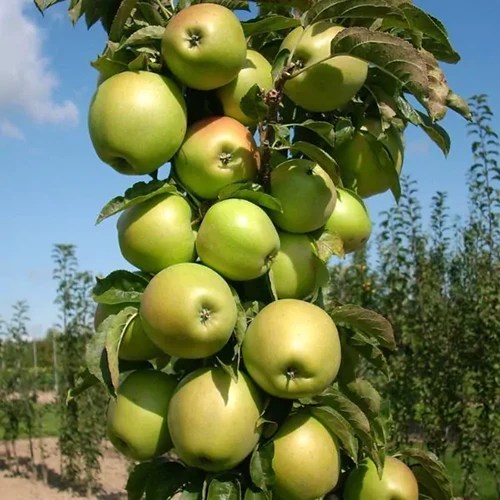
Most midget Tree require staking because they are n’t strong enough to stay upright when they have a full load of yield . They have little root scheme that will tumble the right way out of the land in eminent idle words or heavy rain .
Be certain toread our template to cross-pollinate orchard apple tree treesif you are n’t already intimate with the requirement . Most apple need to be institute with another orchard apple tree orcrabapple treethat blossom around the same time nearby so as to produce a harvest .
Also , keep shiver hours in mind . Apple tree demand a sealed number of hours per yr under 45 ° fluorine and above 32 ° F to produce fruit .
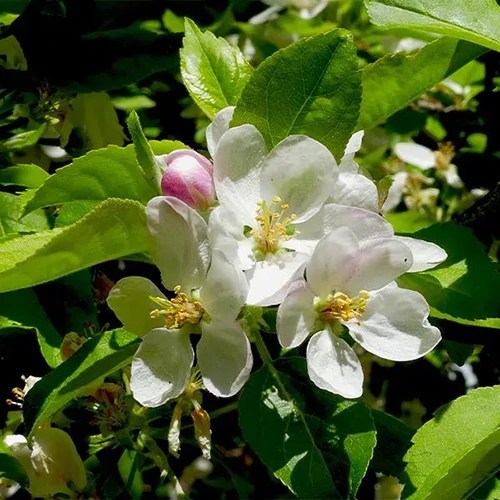
This is n’t concern to how hot your climate is overall . For illustration , I live in the Pacific Northwest , where our temperatures are usually moderate . We rarely see freezing atmospheric condition , but we log about 3,000 thrill 60 minutes each yr .
Meanwhile , the notoriously frigid winters of North Dakota do n’t translate to a lot of chill hours – again , these are chill hours , not hours drop below freeze . They only receive 800 frisson minute in Bismarck .
People in southerly Florida and Texas do n’t have any shiver hours to speak of , for the most part , which is great if you hate perspirer but bad if you want to grow this type of fruit .

Most apple are hardy in Zones 4 to 8 , but we ’ll get you know if one of our selections below pervert from this .
1. Ambrosia
If the name of this cultivar has you dreaming about dear - dulcet fruits , you ’re on the good cartroad . The fruits are sweet and floral .
I usually prefer a tart orchard apple tree , but if you ’re going to offer me an ‘ Ambrosia , ’ I could never pass it up . It ’s likea sweet figwrapped in crisp yellow and reddened cutis . There are absolutely no tart notes in this orchard apple tree .
‘ Ambrosia ’ was at random discover by Sally and Wilfrid Mennell in British Columbia , Canada , where their woodlet is located . It quickly became a Canadian favourite .
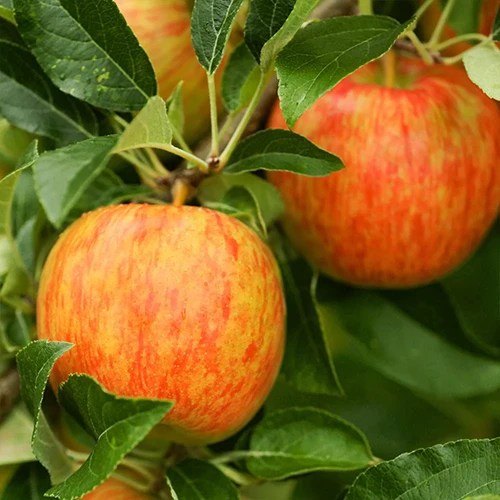
Since they miss superman , they do n’t brown as promptly as other apples . They also have a thin skin , so there ’s no pauperism to strip them . In Zones 4 to 8 , this flora will top out at 12 feet .
verify you found it somewhere that will pick up 600 chill hours and give this group 4 pollinator a group 3 , 4 , or 5 friend .
2. Blushing Delight
Part of the Urban Apples ® brand , Blushing Delight ™ is a columniform ( or limbless ) gnome apple that stays a slim two ft wide and 10 feet improbable .
It does n’t need funding , but you’re able to grow it next to a wall or column to save space .
The yellow fruits take on a pretty bloom hue when they ’re ripe , which happens in mid - September .
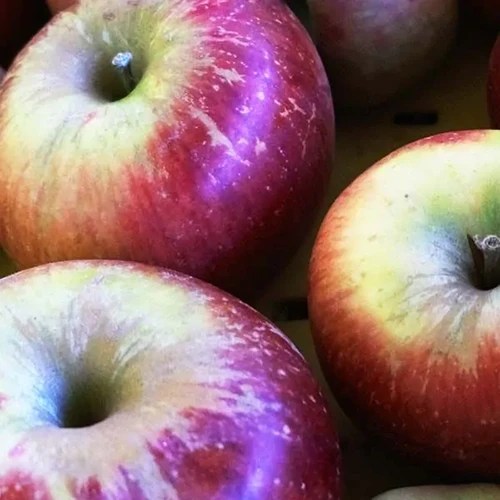
flush Delight ™
This disease - resistant cultivar is a mid - season blooper , so find it a familiar that blossom at the same time . Anything in radical 2 , 3 , or 4 will exercise , and it needs 800 chill hours .
It’savailable at Nature Hillsas a bare root if you need something that wo n’t eat on up all the extra room in your garden .

Or you’re able to snap up a twosome of pollinator , with a ‘ Blushing Delight ’ paired with ‘ Golden Treat,’also at Nature Hills Nursery .
3. Garden Delicious
Nope , not ‘ Golden Delicious . ’ Dwarf ‘ Garden Delicious ’ is ego - fruitful , so it does n’t demand a companion if you do n’t want to allow for one .
If you do give it a pollinating pal , it will provide even more of the dead balanced sweet - tart yellowish green fruits .
FYI : This is an early - time of year boner ( group 1 ) , and you ’ll need to choose another early or former to midseason bloomer to implant nearby ( group 1 or 2 ) .
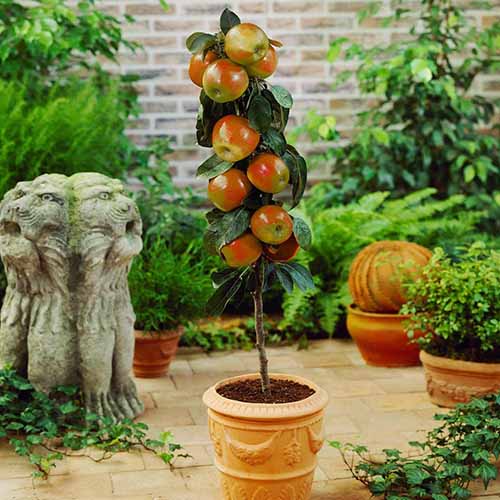
‘ Garden Delicious ’
Another standout characteristic is that this tree diagram only needs 600 chill hr , so it ’s perfect for warmer regions .
Resistant toapple scaband unfearing in zona 4 to 9,Nature Hills carries‘Garden Delicious ’ as a three- to four - foot - tall plant in a # 3 container .

At that size of it , you could very well be eating your own homegrown apples the same class you plant .
4. Golden Sentinel
‘ Golden Sentinel ’ give you gorgeous gilded yellow and blush red apples late in the season , ripening over a few weeks in October in most areas .
This tiny tree is a columnar character , which stand for it does n’t fork out , and it produces fruits on the main trunk .
It only grows 10 feet tall and three feet wide , which means you’re able to put it just about anywhere so long as it has full Lord’s Day .

‘ Golden Sentinel ’
‘ Golden Sentinel ’ needs 800 chill hours and a pollinator friend that blooms at midseason , or to mid to late season ( chemical group 4 or 5 ) .
It ’s so pretty that you could grow it as an ornamental , with the fruit being a major incentive . Visit Nature Hills Nurseryto nab one .
5. Honeycrisp
Most of us have nibbled on a Honeycrisp ™ from the memory , but you have n’t tried arealHoneycrisp until you ’ve had one smart off the tree .
you’re able to bump these tree in gnome , semi - dwarf , and standard sizes , with the dwarf options top out at 10 feet .
The fruit senesce at mid - season in the fall , quick for snacking in mid - September , and it take several calendar week for all of the fruit to senesce so you do n’t have to eat them all at once .
Honeycrisp ™
The blossoms appear at mid - season in spring , so beak a collaborator that blooms at the same time . Those in group 2 , 3 , and 4 are good campaigner .
This cultivar needs about 800 chill hours to produce .
If you want a ready - made sweet orchard apple tree with a sweet taste and crisp grain , bring down Fast Growing Treesto cop a dwarf tree diagram .
Find tips on deal for Honeycrisp tree diagram here .
6. Leprechaun
‘ Leprechaun ’ is a true midget breed from a ‘ Granny Smith . ’ It has the same characteristic lime green , crisp - tart fruits but they grow on a tree that stick around under six groundwork grandiloquent .
This is another one of the uncommon dwarf varieties that does n’t involve staking .
Bred in Australia , ‘ Leprechaun ’ can be gruelling to find in the US , but strong point retailers carry it .
Once you bump yours and bring it home , verify you give it a companion because it is n’t self - fruitful . This cultivar flowers early on in the time of year .
Give it 800 tingle hours in zone 4 to 9 .
7. Melrose
‘ Melrose ’ is right on the cusp of dwarf and semi - dwarf at 12 to 15 feet tall , but it ’s too undecomposed to keep off of this tilt .
Developed at the Ohio Agricultural Experiment Station during World War II , it ’s a cross between ‘ Jonathan ’ and ‘ Red Delicious ’ that feature the unspoiled of both . It ’s even the official apple of Ohio .
Though it needs 1,000 chill hours and turn in Zones 5 to 9 , the harvested fruit keeps well . It has creamy white human body without being grainy .
They ’re sharp with just enough sweetness to balance it out , and they have a pleasing flattened shape .
When these apples are available at my local farmers securities industry , they sell out extremely tight .
I ’m not sure if it ’s the yellow-bellied , green , and red skin that is just pray for an Instagram moment or the spirit . Both make good sense to me !
‘ Melrose ’
The trees are extremely vigorous and partly self - pollinating . It ’s a mid - season harvest and blossom type ( group 3 ) , so if you decide to give it a pollinator Quaker , await for one that blooms at the same clock time .
You ’ll be able to harvest way more fruit if you plant a suitable comrade .
Nature Hills hasthree- to four - foot marvellous plant in # 3 container available in casing you ’re feeling the pull of ‘ Melrose . ’
8. Pixie Crunch
‘ Pixie Crunch ’ is a flyspeck dainty . It stay on under 10 feet magniloquent , prime mid to late season , and it must have a pollinator fellow traveler .
Since it ’s in group 4 , look for a ally to constitute nearby from group 3 , 4 , or 5 .
The flesh is crunchy ( as you ’d gestate ) and scented , blending the flavor of its ‘ Golden Delicious ’ and ‘ Red Rome ’ parentage . It ’s also disease resistant and hardy in zone 3 to 8 .
This cultivar demand about 800 shudder hours .
9. Red Prairie Spy
‘ Red Prairie Spy ’ is turn on semi - dwarf rootstock , but it typically stays about 10 animal foot tall .
Just be cognisant that it could potentially reach up to 15 feet , so if a scant stature is significant , be aware that this one might get too big for you .
For those who ca n’t imagine Halloween without delicious red apples , this one is a good choice . The harvest is ready in October , though it takes up to a month for all of the fruits to senesce .
The fruit are super juicy and fresh , everlasting justly off the tree , but they also store well for a long sentence .
‘ Red Prairie Spy ’
This cultivar was developed for commercial growers in area with abrasive winter .
It ’s rated for insensate winters to Zone 4 , but I know someone in 3b who is enjoying massive harvests each year . It ’s one tough cookie , in a flyspeck software system !
Dreaming of Thanksgiving apple pies ? find fault up a ‘ Red Prairie Spy’at Nature Hills Nursery . They express four- to five - foot barren root word .
At that size , you may expect fruits the year of or the class after you implant .
10. Scarlet Sentinel
Big , juicy , classic red fruits grow on this three - substructure - spacious and 10 - infantry - tall tree , meaning you may have that characteristic red apple sweet and munch even if you only have a flyspeck spot available . This case can even be grown in containers !
This early to mid - time of year pratfall ask 800 thrill hours , but more is better , and up to 1,200 is idealistic for the best harvest home .
‘ Scarlet Sentinel ’
This Sir Herbert Beerbohm Tree is vigorous , dependable , anddisease - resistant . It even tolerates uttermost oestrus , which can write cataclysm for some apples .
Want one of your own ? Me too . Pick one up at Fast Growing Trees , and grab one for me too .
11. Sweet Sixteen
Plant breeders at the University of Minnesota crossed a ‘ northerly Spy ’ and ‘ Frostbite ’ to make ‘ Sweet Sixteen ’ for growing in areas with frigid winter . It ’s audacious in zone 3 to 8 .
‘ Sweet Sixteen ’ lives up to its name . found it with another mid - season bloomer , and you ’ll be treated to super sweet fruit in early fall with note of cherry .
They ’re so sugared that you might not postulate to add sugar to your dessert recipes . But they break down promptly , resolve with draw out vulnerability to heat , so they ’re best enjoyed fresh or after just a short bake .
This midget Sir Herbert Beerbohm Tree grow to just 10 feet magniloquent , and it also comes in a semi - dwarf size of it .
The yield is as pretty as it is scrumptious , with bright flushed flesh covered in swipe and maculation of yellow . Give this one about 800 chill hours .
12. Tangy Green
Another fellow member of the Urban Apples ® trade name , Tangy Green ™ is a columnar tree diagram that develop just eight to 10 understructure marvellous and two feet wide .
This mid - season blooper needs a Quaker , but so long as it has a pollinator , you ’ll get more fruit than you ’d probably bear .
Tangy Green ™
The fruits are green with a more or less tart nip . It ’s extremely disease insubordinate , but make trusted it gets 800 chill hours , or you wo n’t be knee - deep in Malus pumila Proto-Indo European come late summertime .
Plant it in a container or the midget of garden space . Grab this cultivarat Fast Growing Trees .
13. Tasty Red
A sibling of Tangy Green ™ and other Urban Apples ® cultivars , Tasty Red ™ is a columnlike type that mature two understructure wide and 10 feet tall .
The bluff carmine orchard apple tree are as moderately as they are sapid , with sweet flesh and laconic cutis .
Tasty Red ™
Imagine a Tasty Red ™ and Tangy Green ™ , both mid - season drawers , flanking your patio threshold . It would be so cunning !
And you ’d be able to enjoy both lemonlike green and sweet crimson fruit come late summer , around mid - September .
If you hold out in zone 4 to 9 , you could make this variety a part of your garden , patio , porch , or tiny balcony . buy one nowat Nature Hills Nursery .
Good Things Can Come in Tiny Packages
You do n’t demand a Brobdingnagian railyard to grow orchard apple tree . These trees can fall in small package and they still uprise full - sized fruits , just few of them .
And permit ’s be real – most of us ca n’t use up all the apples produced by a full - sized tree anyway .
Once you get your tree diagram in the terra firma or into a container , you ’ll probably need a bit more info onhow to care for and use your apples , right ? If so , study ascertain these articles out next :
© Ask the Experts , LLC . ALL RIGHTS RESERVED.See our TOSfor more detail . Product photograph via Fast grow Trees and Nature Hills Nursery . Uncredited photos : Shutterstock .
About
Kristine Lofgren